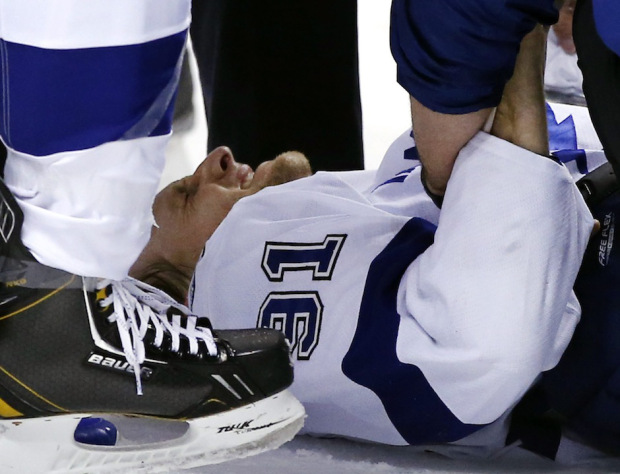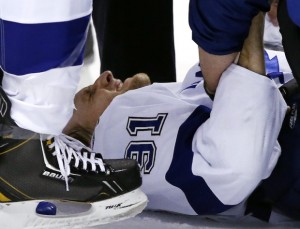
Like many Canadians, I can remember exactly where I was when Sidney Crosby scored the “golden goal,” propelling the Canadian men’s Olympic hockey team victory over the United States at the 2010 Vancouver Olympics (it was at a hotel in the Dominican Republic, in case anyone is curious). The 2010 Olympic hockey tournament was by far the most invested I have ever been in a sporting event in which I was not myself a participant.

Once the thrill of the 2010 victory wore off, the executives at Hockey Canada surely turned their attention to one thing; defending gold at the 2014 Sochi Olympics. Well, that time is almost upon us. And with it comes one question: Who will be called upon to don the Canadian sweater? Who will be selected as a guardian of the gold?
It is not an easy task to select the Olympic team, as there is no shortage of qualified applicants. Over 50% of the National Hockey League consists of Canadian players, including many of its top athletes. Hockey Canada is not going to release its roster until New Year’s Eve. However, the Obiter is going to spare you the wait. Based on the form of meticulous analysis that only law students can engage in, I have determined who Hockey Canada will (or at least should) select to represent the country in Sochi.
Forwards
Line 1: John Tavares – Sidney Crosby – Martin St. Louis
While there is not a lot of certainty surrounding the Team Canada roster, one thing is for certain: Sidney Crosby will center the top line. The undisputed best player in the world will be relied on in all situations and will most likely captain the team. As for his linemates? There was speculation that Crosby was going to play alongside sniper Steven Stamkos, however, Stamkos recently suffered a gruesome leg injury and his status for the Games is in doubt. Instead, Crosby should be flanked by Stamkos’ Tampa Bay Lightning teammate Martin St. Louis, and New York Islanders superstar John Tavares.
Line 2: Taylor Hall – Ryan Getzlaf – Corey Perry
The Anaheim Ducks are one of the NHL’s top teams early in the season, and they are driven largely by the efforts of two players who were critical to Team Canada’s success in 2010. Ryan Getzlaf and Corey Perry form a dynamic one-two punch for the Ducks, and they should be able to carry that success overseas. Joining the pair would be Edmonton Oilers power forward Taylor Hall. Hall would inject some much-needed speed into the line while Getzlaf and Perry bring the size and physicality that is not evident elsewhere in the lineup.
Line 3: Matt Duchene – Jonathan Toews – Patrick Sharp
The trend of teammates playing together continues, as 2010 top forward Jonathan Toews centers a line alongside his Chicago Blackhawks teammate Patrick Sharp. The duo is joined by the speedy Matt Duchene. Considered a longshot to make the team coming into the season, Duchene’s play in propelling the Colorado Avalanche to the top of the Western Conference cannot be ignored. Duchene’s game is also well-suited for the big international ice surface. While this unit has no shortage of offensive pop, it can also be relied upon to play a sound defensive game, as evidenced by Toews’ selection as the 2012-13 Selke Trophy winner as the NHL’s best defensive forward.
Line 4: Eric Staal – Patrice Bergeron – Logan Couture
The fourth line also feature players who are known for their two-way game, and may be designated as the team’s “shutdown unit,” tasked with slowing down opponents’ top offensive threats. Patrice Bergeron is an absolute ace on face-offs and his two-way game is unparalleled. Natural centers Staal and Couture play defensively responsible games, but are also apt to fill the net given the opportunity.
Extras: Rick Nash, Claude Giroux
Rick Nash and Claude Giroux, considered locks to make the team this summer, have seen their stock plummet due to injury (Nash) and poor production (Giroux). If either player picks up their play over the next month and a half they stand a good chance to make the roster (likely at the expense of Taylor Hall or Patrick Sharp). As it stands now, the two players have the track record to make the team as extras.
Defencemen
Several of Canada’s top defenders from the 2010 Olympics should return in 2014, including tournament all-star Shea Weber. Weber is likely to form one-half of the top pairing alongside Duncan Keith. Drew Doughty was an integral part of the 2010 team, and he is joined by a new face: Marc-Edouard Vlasic. The underrated Vlasic is one of the biggest reasons for the San Jose Sharks’ early season success, and his speed and intelligence lends itself to the international game. The third pairing features a couple players who play together in the NHL, logging heavy minutes for the St. Louis Blues. Jay Bouwmeester and Alex Pietrangelo will bring the combination of speed and toughness that makes them one of the NHL’s best pairings to Sochi.
Defensive pairings:
1: Duncan Keith – Shea Weber
2: Marc-Edouard Vlasic – Drew Doughty
3: Jay Bouwmeester – Alex Pietrangelo
Extras: Marc Stall, Dan Boyle
Goaltenders
Historically, goaltending has been a position of strength for Canada, with the world’s best goaltenders suiting up for the national team. Now, none of Canada’s options can make a realistic claim as the world’s best. However, there are still some steady if unspectacular options available to tend Canada pipes in Sochi. Roberto Luongo replaced Martin Brodeur as Canada’s number one netminder in 2010, and he is likely to be on the team again. However, he is likely to enter the tournament in his familiar backup role. In the starter’s role should be Montreal Canadiens’ goalie Carey Price whose solid play has kept Montreal competitive this year. Drawing in as the third goaltender is the team’s fourth Chicago Blackhawk, Corey Crawford. Crawford has demonstrated that he is a pressure-performer who can make the big save when called upon.
Goalies: 1. Carey Price 2. Roberto Luongo 3. Corey Crawford
